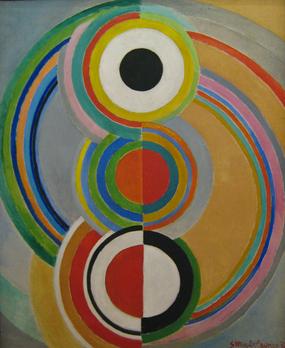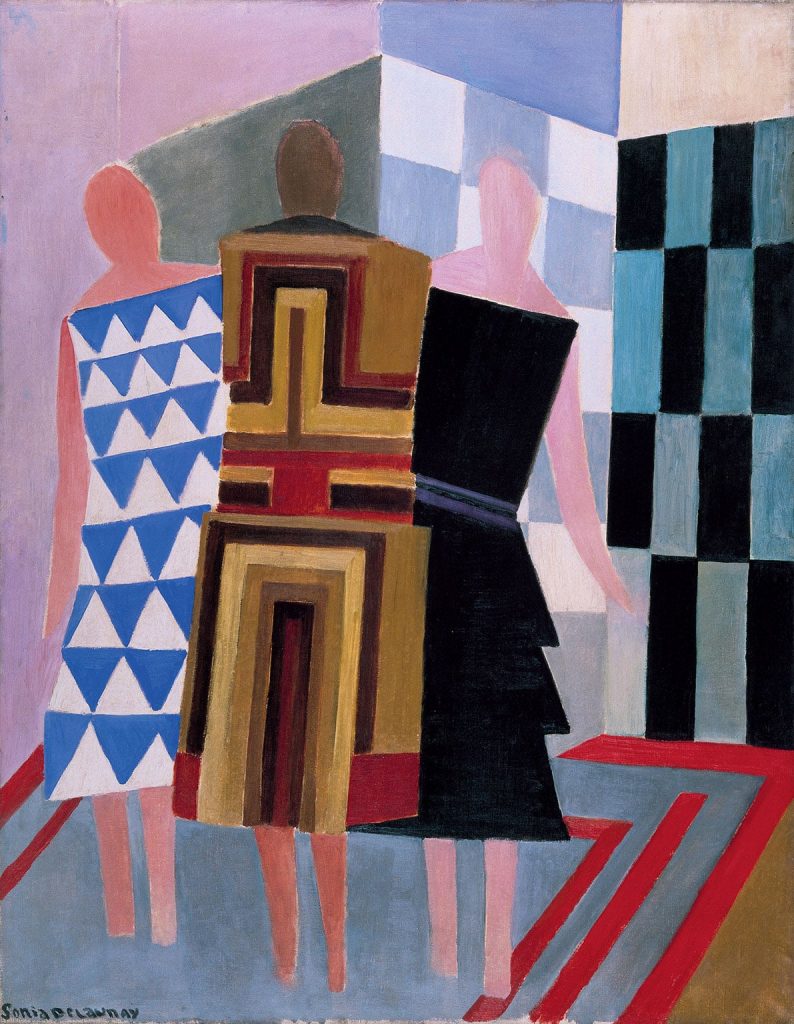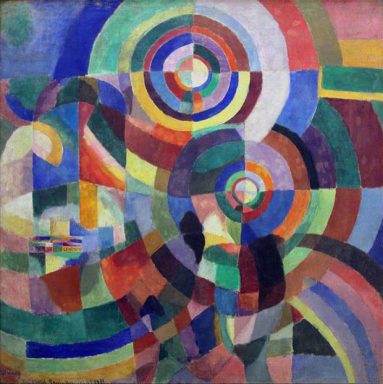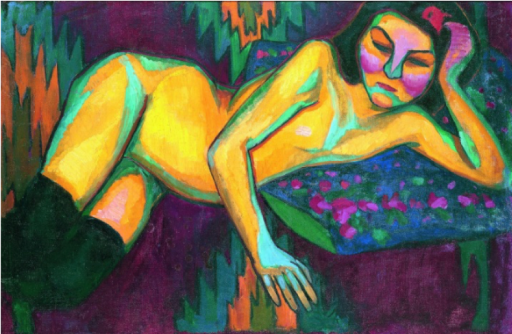
Sonia Delaunay was a Russian artist who spent most of her career in Paris. She trained in Russia and Germany and later moved to France. Delaunay was a pioneer of abstract art in the years leading up to World War I. She was a Russian painter, illustrator, and textile designer. She and her husband Robert founded the Orphism movement and are known for their use of strong colours and geometric shapes. She was the first living artist to have a major exhibition at the Louvre in 1964. She was also the first woman artist to be named an officer of the French legion of honour.

Sonia Delaunay, Simultaneous Dresses (The three women), 1925
The Delaunays employed Orphism to produce non-objective imagery, the importance of which was predicated on the intensity of the expression that they could create with colour on the canvas’s surface. They juxtaposed primary and secondary colour lines, knowing that the scientific effect on the eye of such combinations would result in art that was just as enthralling to the viewer as those presenting a typical view of reality, such as a figure resting on a couch. Their efforts resulted in a collection of work that compelled viewers to experience their pieces aesthetically – yet powerfully.

Sonia Delaunay’s textile design work explores expressive colour in a way that sets her apart from other members of the modern avant-garde. She was in charge of costume design in a variety of performing arts, including theatre and dance, in addition to designing, creating, and selling garments in her own fashion business. She eventually created a considerable textile line that was picked up by one of Europe’s largest fabric manufacturers.
Prismes électriques is a great example of Delaunay’s signature concentric circles. Delaunay refracts the lights and bustle of Boulevard Saint Michel into almost full abstraction as a hymn to modernity. With the exception of two figurines in the lower center of the painting, everything disintegrates into colour.

Nu Jaune contrasts the models’ bright yellow skin with chilly emerald accents. One of Delaunay’s most remarkable uses of tone appears here. Black marks typically contrast with bright colours. This results in a bold and hefty outline that is primitivist in nature. The model’s face appears mask-like, implying sorrow. Delaunay does not attempt to portray her as appealing, instead opting for a harsh, modern aesthetic.
Sources:
https://en.wikipedia.org/wiki/Sonia_Delaunay
https://www.britannica.com/biography/Sonia-Delaunay
Image Sources:
https://en.wikipedia.org/w/index.php?curid=49954250
http://www.hasta-standrews.com/birthdays/2018/11/12/sonia-delaunay-1885-1979

December 6, 2021 at 8:59 pm
Garleen,
Nice work on Sonia Delaunay here! You have solid information and personal thoughts about the artist written in a clear and interesting way. I’m giving you a 2/2 for this latest post. Tomorrow you’ll get the opportunity to present your PK presentation.
Jeff
December 9, 2021 at 6:40 pm
Garleen,
Just wanted to let you know that your mark on the PK was 8/10. Your choice was really interesting in this super contemporary artist, Maria Qamar. Your information was good and I like the comparisons you drew with other artists like Lichtenstein and Warhol. Nicely done!
Jeff